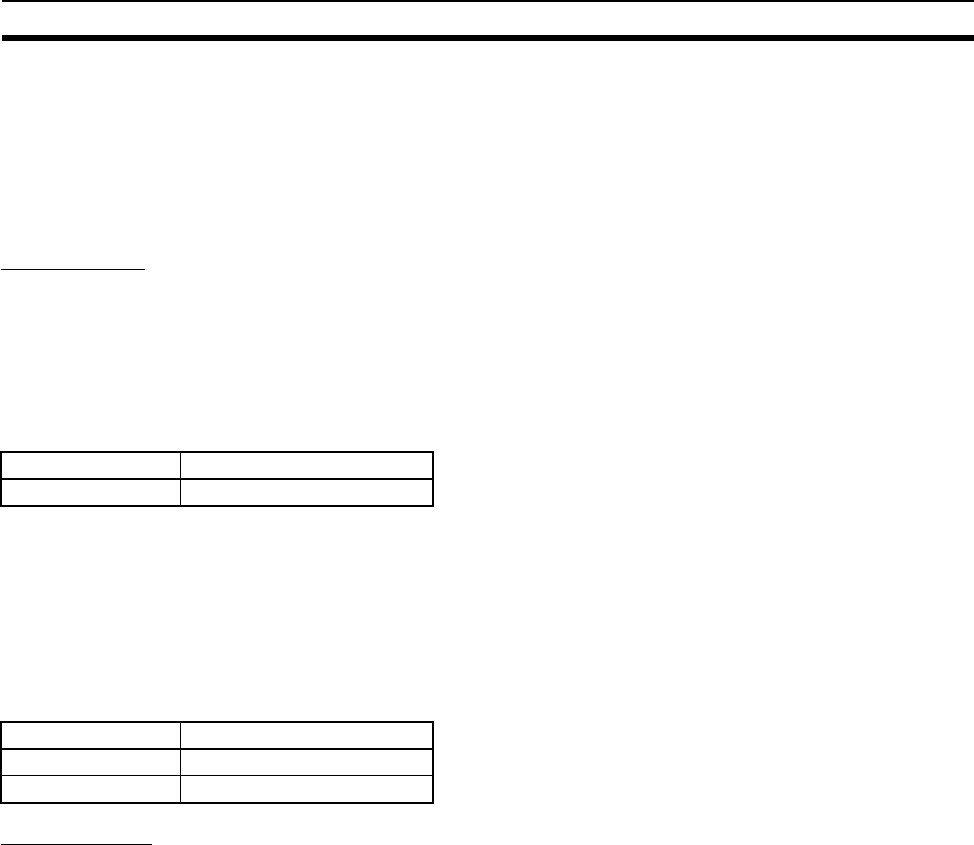
386
CIP Message Communications Appendix D
The 8-bit logical address can be used for the Attribute ID. Use the Attribute ID when requesting a Service of a
particular Object of a particular device.
Example of CIP Message Creation
Setting the Route Path
Port Number
The following description explains the network port, which is used to specify the route path. In the CJ2 Series,
the Backplane is also considered part of the network when specifying the Link Address.
CPU Unit
CJ2 (Not supported by CS1/CJ1 CPU Units.)
Each CPU Unit has one backplane port. By convention, the built-in port on a CJ2H-CPU6@-EIP or a
CJ2M-CPU3@ CPU Unit functions as a CPU Bus Unit.
The Backplane port is the Backplane. CPU Unit communications routed through CPU Bus Units always travel
through the backplane.
EtherNet/IP Unit or CJ2 Built-in EtherNet/IP Port
The EtherNet/IP Unit has two ports. A CJ2 CPU Unit also has two built-in EtherNet/IP ports. One is a Back-
plane port and the other is an Ethernet port.
The Backplane port is the Backplane. Communications routed through the CPU Unit, a Special I/O Unit, or
another CPU Bus Unit always travel through the backplane.
Link Address
The Link Address is a node address on the network, which is used to specify the route path.
The method to set the Link Address is different for each network.
In the CS/CJ Series, the Backplane is also considered part of the network when specifying the Link Address.
Backplane
• CPU Bus Unit or Special I/O Unit
In the CS/CJ Series, the base unit is recognized as a backplane port.
CPU Bus Units, such as the EtherNet/IP Unit, are also recognized as nodes on the backplane port.
The Link Address of a CPU Bus Unit on the Backplane is the “unit number + 10 hex.” For example, when
the unit number is 0, the Link Address is 10 hex. When the unit number is F, the Link Address is 1F hex.
The Link Address of a Special I/O Unit on the Backplane is the “unit number + 20 hex.” For example, when
the unit number is 0, the Link Address is 20 hex.
Network
• EtherNet/IP
The Ethernet port’s Link Address is described by the IP address.
The IP address must be described entirely in ASCII.
For example, IP address of 192.168.200.200 will be [31] [39] [32] [2E] [31] [36] [38] [2E] [32] [30] [30] [2E]
[32] [30] [30].
Port Port Number
Backplane 1
Port Port Number
Backplane 1
Ethernet 2


















